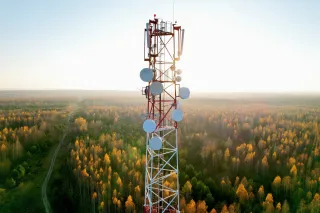Each network generation comes with expectations in tow. Recently, we have entered the era of 5G, but while 5G networks are implemented and novel applications emerge, we are far from having captured all the opportunities of this generation. As many of us researchers are eager to turn our attentions to 6G, the commercial potential of 5G is vast and largely still waiting to be explored.
Reading network providers’ advertising, it would be easy to think that 5G is here. This, however; is not quite so simple. As any coverage map will show, even the 5G network that is here, is unevenly distributed and has limited coverage – barely reaching beyond big cities. And more importantly, many of the 5G-enabled capabilities aren’t here at all yet.
Networks are only the beginning – new devices and advanced applications will show the full potential of 5G
Initially, great expectations were set on 5G to become a ubiquitous network that connects everything to everything. Expectations focused especially on unforeseen real-time applications, such as wireless operation of autonomous vehicles and wireless control of industrial machines. However, the arrival of 5G hasn’t happened as one drastic transformation, and instead, we have since learned that many of the challenging applications will have to wait for the advanced features of 5G to appear. 5G-Advanced will continue to develop features missing from the current 5G standards.
The first installed 5G networks are non-stand-alone ones that work in parallel with 4G networks and that are controlled by the 4G networks. Gradually, these early installations are upgraded to stand-alone versions, which are controlled by the 5G networks’ own control units. The current installations have many other insufficiencies compared to the expectations. For example, access bit rates are limited to a few hundred megabits per second while the target is in the 10-gigabit per second level. Another example relates to latencies, which should go down to millisecond level and currently are in 10s of milliseconds. These limitations have thus far prevented or delayed the launch of digital transformation of the industry, truly mobile extended reality services and many time-critical services.
Only as more and more 5G capable devices are developed and rolled out, can we truly assess and benefit from the novel features.
There is also much left to be done on the device side of things. From everyday handhelds to complex industrial systems, 5G capability is the exception and not the rule – not to mention truly capturing the benefits of the features that have been introduced. Only as more and more 5G capable devices are developed and rolled out, can we truly assess and benefit from the novel features.
Higher speeds and lower response times enable new industrial applications
While 5G is a nice step up for private users who can expect to enjoy faster mobile networks, better quality life streams and video calls and more reliable connections, the most exciting potential from research perspective is the new capabilities that create opportunities for new industrial applications. An interesting new business opportunity arise from private networks enabled by 5G. As companies can build their own 5G networks to secure in-house communications to fulfil most stringent requirements they also can offer additional capacity to other users. Some companies (other than current telecom operators) may specialise to operate the private networks.
Application potential undoubtedly exists in many verticals, but for example, manufacturing industry, transport and logistics as well as smart energy production and distribution will reach new levels.
As network speeds become up to ten times higher and latencies drop to one tenth, entirely new applications become possible. The LuxTurrim5G project demonstrated how high-resolution cameras, radars and different air quality sensor can be combined to offer real-time services for citizens. Remotely operated vehicles as well as remote surgery are other examples that benefit from 5G’s high speeds and low response times
Application potential undoubtedly exists in many verticals, but for example, manufacturing industry, transport and logistics as well as smart energy production and distribution will reach new levels. In our daily lives, we can expect to witness leaps in areas like advanced Internet of Things (IoT) applications or major improvements in autonomous traffic.
In our view, future communication networks in the smart and sustainable world must be stable, scalable, efficient, reliable, and agile. At VTT, we look at the evolution and development of current 5G systems as also paving the way towards 6G. For example, we are developing slicing and secure micro-segmentation solutions, which enable more flexible use of resources and computational resource allocations for critical applications. We foresee that the development of software-based architecture will take 5G and 6G networks more and more towards agent-type virtualised micro functionalities that enable the flexibility and efficiently distributed control of network resources.
Interested to in reading more? In our new Beyond 5G networks white paper we describe our views on the development of 5G towards 6G and introduce VTT’s research directions and related outcomes:
• The future networks
• Cyber security and 6G
• Wireless technologies and signal processing
• Components and front-end modules and subsystems
• 6G computing
Find out more by downloading our Holistic approach to 6G networks white paper.





